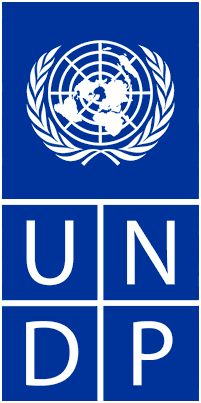Community / Land projects / Restoration of Degraded Natural Forests and Soil Erosion Management Improvement in Erosion-Prone Regions of Ch
Restoration of Degraded Natural Forests and Soil Erosion Management Improvement in Erosion-Prone Regions of Ch

€2717457.92
03/22 - 03/22
Completed
This project is part of
Implementing Organisations
Donors
Data Providers
Objectives
To mainstream sustainable Forest Landscape Restoration (FLR) and Land Degradation Neutrality (LDN) for improving flows of ecosystems services of degraded Natural Forest Use Land (NFUL) in soil erosion-prone regions of China, based on a multi-level governance and landscape approach.
Other
Note: Disbursement data provided is cumulative and covers disbursement made by the project Agency.
Target Groups
The durability of the innovative forest landscape restoration interventions demonstrated in the project and upscaled will largely depend on sustained involvement and generation of livelihood benefits for local communities. The estimated project direct beneficiaries include 10,000 local people, of whom 50% are women. These people from the local communities in the project landscapes will benefit directly through strengthened and expanded sustainable livelihood initiatives. Additionally, 17,500 forest workers and ecological forest rangers are among the direct project beneficiaries. These people from the local communities in the project landscapes will benefit directly through strengthened and expanded sustainable livelihood initiatives. Engagement and generation of socioeconomic benefits for local communities is an important aspect of the integrated landscape approach in the project design. The viability of the FLR approaches demonstrated on the project over the long-term will largely depend on sustained involvement of local communities and flow of sustainable livelihood benefits. The project will provide opportunities for local people to be involved in capacity building activities aimed at strengthening their existing or introducing new close-to-nature livelihood models, including under-canopy agroforestry, ecotourism, participatory restoration (e.g., community nursery, planting, and maintenance), etc. Under the current conditions in China, one of the biggest barriers hindering economic prosperity in rural area is that farmers, especially women and ethnic minority farmers often have limited access to green supply chains, lack financial management skills, and are uninformed of real-time market information and of partnership opportunities. By facilitating linkages to local economic associations, cooperatives and women’s groups and ecologically conscious private enterprises who are closer to the marketplace, the prospects of their income generation capabilities and assets accumulation will be substantially improved.Apart from these monetary gains, i.e., increased financial capital, the local direct beneficiaries will gain non-monetary benefits. Adoption of improved NFUL management practices are expected to restore ecosystem functions and services, resulting in improved land productivity, water quality, climate regulation services, erosion control capabilities, etc. These improvements will generate contribute to increased nature capital of the local communities.Significant gains in human capital are also expected through the project interventions. For example, local communities will benefit from knowledge achieved through skills trainings, learning-by-doing, financial management training, etc. The institutional level direct beneficiaries, including 2,500 people at the national level and 17,500 forest workers and ecological forest rangers at the landscape level, will also increase knowledge and hands-on experience. Strengthened institutional capacities will help ensure sustainability of the results achieved during the project and upscaling of the demonstrated interventions in other parts of the landscape and in other regions in the country.In addition, the project strategy emphasizes the need to strengthen social capital in the target landscapes, through establishment of multi-stakeholder, multi-level landscape mechanisms, which will provide local people, including women and ethnic minorities an opportunity to actively participate in the decision-making processes regarding sustainable management of NFUL resources in their communities. The project will also facilitate enhanced social association, e.g., cooperatives, small enterprises, as well as fostering enabling partnerships with governmental entities, NGOs, and private sector enterprises, e.g., through insertion of local farmers into green value chains,.The cumulative monetary and non-monetary benefits will strengthen the resilience of local communities with respect to the expected impacts of climate change, e.g., restored and protected ecosystem functions and services, and also in regard to socioeconomic disruptions, e.g., diversified income opportunities will allow local households to cope with possible market fluctuations or supply chain interruptions, such as those that occurred during the COVID-19 pandemic. Local communities will also benefit from the enhanced resilience to natural disasters, such as flooding. Mitigation of risks associated with soil erosion will reduce potential losses of both property and life in the project landscapes. Further, improved soil restoration at scale can bring benefits to the agricultural sector and thus the economy generally. It is not only those in the upstream forest areas that will benefit, but downstream farmers across wide areas in China will also be important beneficiaries of soil restoration work. Livelihood diversification, as promoted by the project (both in the livelihood demonstrations and the rubber and tea monoculture upgrade to forest corridor demos), if replicated on a wide scale, will bring strong socioeconomic benefits beyond the project landscapes.The durability of the global environmental benefits achieved through the project strongly depends on sustained participation of local communities, civil society, private sector, and other stakeholders. The multi-level, multi-stakeholder governance approaches demonstrated on the project are instrumental in achieving the global environmental benefits. The project is relevant to a number of SDGs, most notably SDG 1 (No Poverty), SDG 5 (Gender Equality), SDG 7 (Affordable and Clean Energy), SDG 13 (Climate Action), SDG 15 (Life on Land), and SDG 17 (Partnerships for the Goals), as outlined below in Table 3 of the Project Document.




